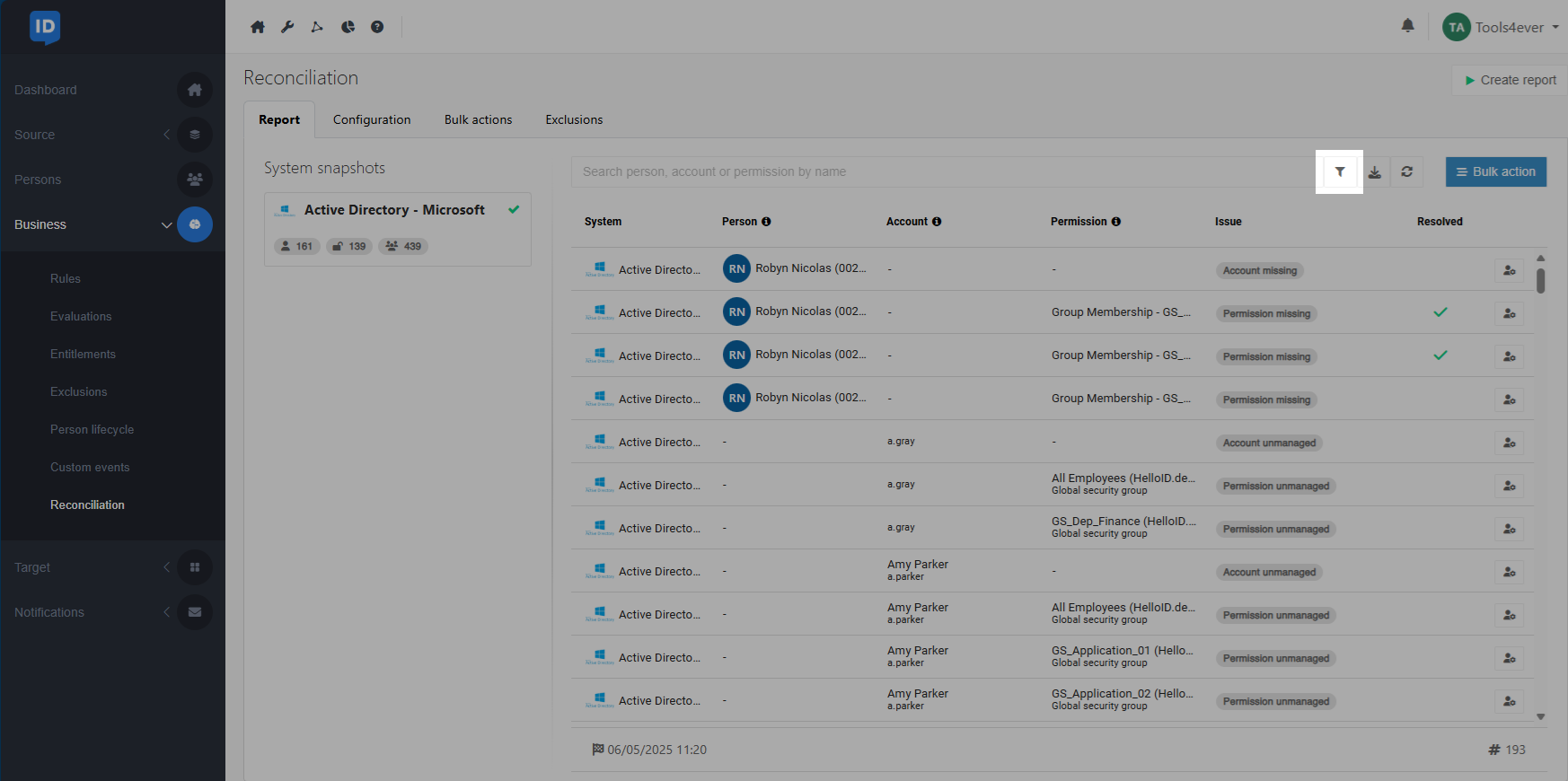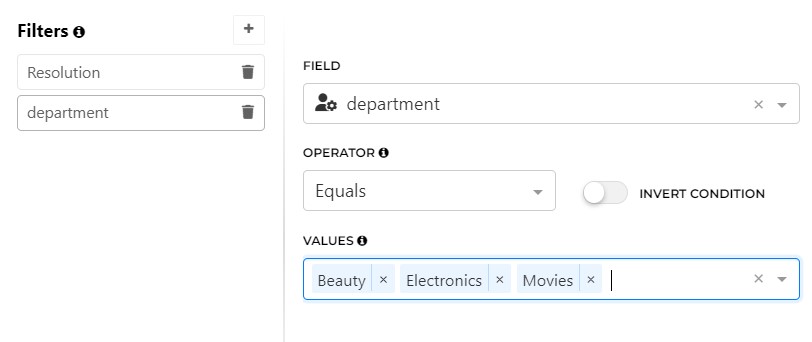Filter issues
You can search and filter issues in a reconciliation report. This allows you to review and resolve a selection of the issues.
Note
The applied filters will also reduce the CSV export.
Go to Business > Reconciliation.
Open the Report tab.
Click the
 Filter icon.
Filter icon.
In the Filters window, click the
 Add filter icon.
Add filter icon.
Select the field to filter on:
Resolution: The type of resolution (e.g. Action initiated by user, or Unresolved)
System: The system in which the issue appears
Issue; see Issues
Linked account excluded: Permission issues for accounts that are already excluded from the report
Account display name
Account enabled: Whether the account is enabled in the target system
Permission display name
Permission description
The account attributes that are mapped in the target system
Tip
To add an account attribute, add it to the target system's target mapping with Mapping type: None. This enables HelloID to read the attribute when it creates a snapshot of the target system.
Create a condition by selecting the operator: Contains or Equals, and entering a value.
With the Equals operator, you can select one or more values (up to 10) from a drop-down list. Values in a filter are combined using an OR condition, meaning that at least one of the values has to match for an issue to appear in the filtered results.
Invert condition turns the associated condition into a NOT condition, causing issues that were previously in scope to become out of scope, and vice versa.
Repeat steps 4 - 6 to add more filters.
Note
Filters are combined using an AND condition, meaning that all filters must be met for issues to appear in the filtered results.
Click outside the Filters window to close it.
A blue  filter icon indicates filters are currently applied.
filter icon indicates filters are currently applied.
Tip
Filter by action
Click the Bulk actions button and select an action to filter the result set further. The report only shows issues for which the selected action is available.